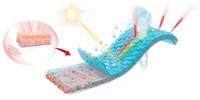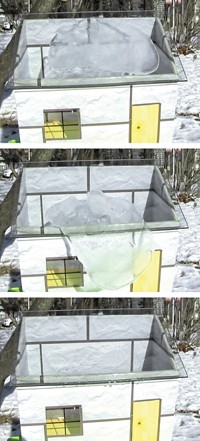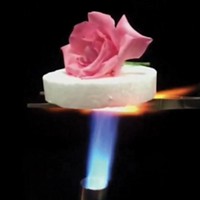Advertisement
Grab your lab coat. Let's get started
Welcome!
Welcome!
Create an account below to get 6 C&EN articles per month, receive newsletters and more - all free.
It seems this is your first time logging in online. Please enter the following information to continue.
As an ACS member you automatically get access to this site. All we need is few more details to create your reading experience.
Not you? Sign in with a different account.
Not you? Sign in with a different account.
ERROR 1
ERROR 1
ERROR 2
ERROR 2
ERROR 2
ERROR 2
ERROR 2
Password and Confirm password must match.
If you have an ACS member number, please enter it here so we can link this account to your membership. (optional)
ERROR 2
ACS values your privacy. By submitting your information, you are gaining access to C&EN and subscribing to our weekly newsletter. We use the information you provide to make your reading experience better, and we will never sell your data to third party members.
Coatings
Packable Kevlar cloak provides infrared stealth across changing temperatures
Porous nanofiber film soaked with a phase-changing polymer could shield people and objects from thermal cameras day and night
by Prachi Patel, special to C&EN
February 27, 2019

Neither camouflage nor darkness can hide heat-releasing objects from thermal cameras. Hiding from such cameras requires blocking the infrared radiation given off by a person or a truck so that it matches the background temperature. Now, researchers have made a strong, lightweight, foldable cloak that can render objects invisible to IR cameras across a range of temperatures without the need for added energy, avoiding many of the disadvantages of previous IR-blocking materials (ACS Nano 2019, DOI: 10.1021/acsnano.8b08913).
The material is a thin, spongy sheet made of Kevlar nanofibers drenched in polyethylene glycol. Clothes or helmets could be lined with the material to provide infrared stealth for soldiers for example, says Xuetong Zhang of the Chinese Academy of Sciences’s Suzhou Institute of Nanotech and Nanobionics, who led the work.
All objects emit thermal energy at IR wavelengths that depend on their temperature. A practical thermal cover needs to tune the IR emissions from soldiers or military vehicles to match the thermal color of the environment, which can vary by place, time of year, and time of day. To make such stealth screens, researchers have previously created materials that actively suppress thermal emissions. But these devices consume energy, work in a narrow range of temperatures, change color too slowly, or are rigid.
Zhang and his colleagues wanted to make an IR screen that could adjust to changing temperatures without needing energy to do so. They made a strong, porous film composed of tangled Kevlar nanofibers that is highly insulating, like a blanket. Then they impregnated the film with polyethylene glycol, which soaks into the pores, and coated the film with a water-repellent resin layer. Polyethylene glycol is a phase-change material that softens when heated, shifting from a crystalline to an amorphous form. The PEG captures the energy of IR emissions and then releases that energy as it re-hardens, without changing temperature.
The resulting composite sheets were lightweight, strong, and flexible, making them easy to wrap around objects. The combination of thermal insulation from the Kevlar nanofibers and IR emission absorption from the PEG make the sheet an excellent IR stealth technology, Zhang says.
To test the cloak’s ability to hide objects in daytime, the researchers placed a ceramic plate under simulated sunlight, and took images with a thermal camera with the light on or off. The plate heats up and cools down faster than its surroundings, so it is easy to see in thermal images when it is uncovered. When the researchers draped the Kevlar-PEG sheet over the plate, however, it disappeared because the PEG absorbs and releases IR emissions more slowly and blends into the background. In tests, the film hid objects at temperatures ranging from about 32°C to over 45°C.

Very hot objects can heat up the PEG very quickly, so additional insulating layers of Kevlar without PEG are needed to conceal them. Zhang says the team is now working on a stealth blanket that combines Kevlar films with the Kevlar-PEG composites.
Advertisement
The new material’s ability to camouflage the thermal emissions of targets over a wide temperature range and even in varying outdoor environments is a big advantage, says Xiangang Luo, director of the Chinese Academy of Sciences’s State Key Laboratory of Optical Technologies for Microfabrication. The foldable, lightweight, and robust material is promising for practical applications, but before it could be used on a large scale, the researchers would have to address the possible high cost and lack of resistance to extreme weather. Shisheng Lin of Zhejiang University adds that the techniques used to make the Kevlar nanofiber film might make it hard to produce large quantities.





Join the conversation
Contact the reporter
Submit a Letter to the Editor for publication
Engage with us on Twitter